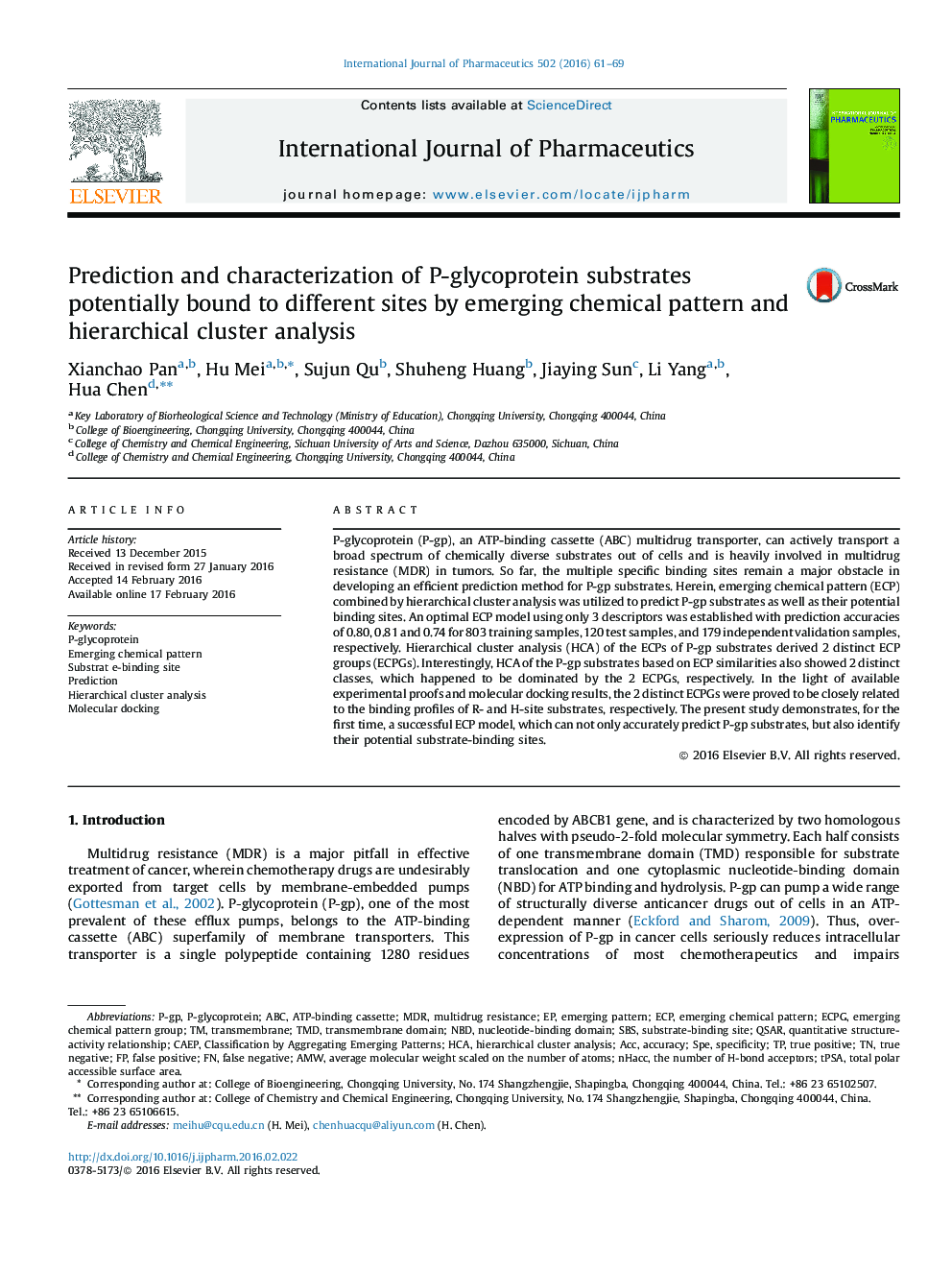| Article ID | Journal | Published Year | Pages | File Type |
|---|---|---|---|---|
| 2501048 | International Journal of Pharmaceutics | 2016 | 9 Pages |
P-glycoprotein (P-gp), an ATP-binding cassette (ABC) multidrug transporter, can actively transport a broad spectrum of chemically diverse substrates out of cells and is heavily involved in multidrug resistance (MDR) in tumors. So far, the multiple specific binding sites remain a major obstacle in developing an efficient prediction method for P-gp substrates. Herein, emerging chemical pattern (ECP) combined by hierarchical cluster analysis was utilized to predict P-gp substrates as well as their potential binding sites. An optimal ECP model using only 3 descriptors was established with prediction accuracies of 0.80, 0.81 and 0.74 for 803 training samples, 120 test samples, and 179 independent validation samples, respectively. Hierarchical cluster analysis (HCA) of the ECPs of P-gp substrates derived 2 distinct ECP groups (ECPGs). Interestingly, HCA of the P-gp substrates based on ECP similarities also showed 2 distinct classes, which happened to be dominated by the 2 ECPGs, respectively. In the light of available experimental proofs and molecular docking results, the 2 distinct ECPGs were proved to be closely related to the binding profiles of R- and H-site substrates, respectively. The present study demonstrates, for the first time, a successful ECP model, which can not only accurately predict P-gp substrates, but also identify their potential substrate-binding sites.
Graphical abstractFigure optionsDownload full-size imageDownload high-quality image (168 K)Download as PowerPoint slide
